Gravel pathways are a timeless addition to gardens and landscapes. They’re practical, affordable, and blend naturally into almost any outdoor setting. Whether leading guests through a flower garden, connecting backyard spaces, or creating a simple walkway to your front door, gravel paths provide functionality without sacrificing charm. But not all gravel is created equal. Choosing the right type can make the difference between a stable, attractive path that lasts years and one that quickly turns into a weedy, uneven mess.
This guide will walk you through everything you need to know about selecting the best gravel for pathways—from understanding gravel sizes and textures to considering drainage, maintenance, and design aesthetics.
Why Gravel Pathways?
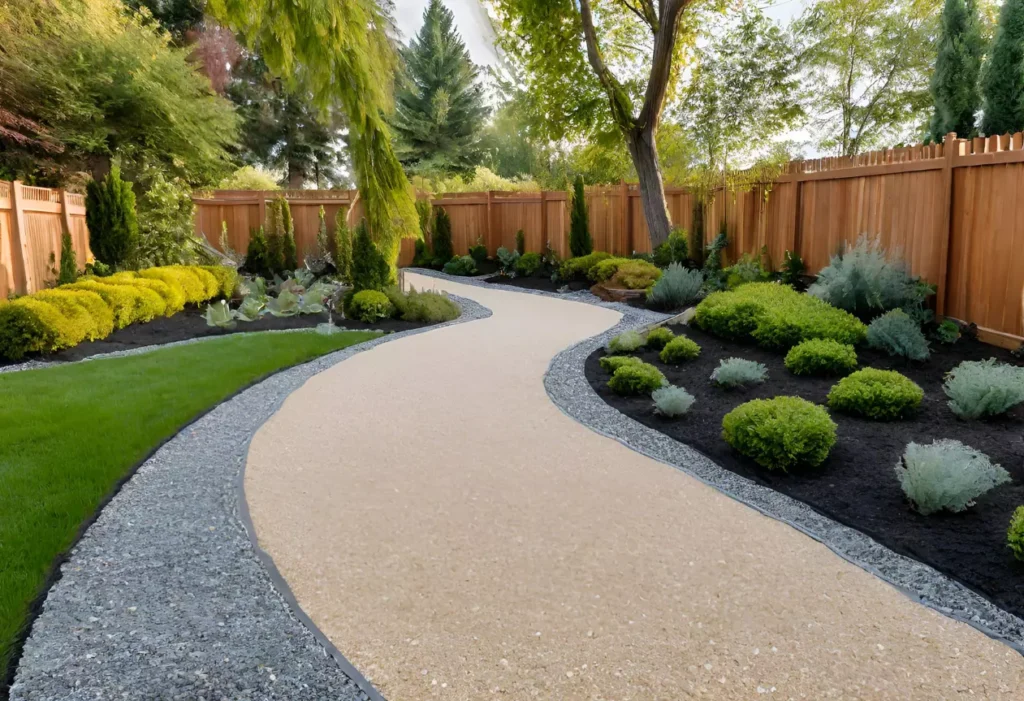
Before diving into specifics, it’s worth understanding why gravel is such a popular material for pathways:
- Affordability: Cheaper than pavers or poured concrete.
- Permeability: Allows water to drain, reducing puddles and runoff.
- Flexibility: Works for formal gardens, rustic landscapes, or modern minimalist yards.
- DIY-friendly: Installing a gravel path is relatively simple with basic tools.
- Variety: Gravel comes in endless colors, textures, and stone types to match any style.
Key Factors to Consider When Choosing Gravel
- Stone Size
- Fines (dust-sized particles to ¼-inch): Compact tightly, forming a stable surface. Good for heavily used paths.
- Small gravel (¼ to ½-inch): Comfortable underfoot, stable enough for walking paths.
- Larger gravel (over ½-inch): Attractive but less stable, better for decorative areas rather than walkways.
- Shape of Stones
- Angular gravel: Edges lock together, creating a firm walking surface. Best for pathways.
- Rounded gravel (like pea gravel): Smooth and attractive but tends to shift underfoot, requiring frequent raking.
- Color and Aesthetic
Gravel comes in shades of gray, white, tan, gold, pink, red, or even black. Choose colors that complement your home’s architecture and garden design. For example:- Warm tones (tan, gold, red) suit Mediterranean or cottage-style gardens.
- Cool tones (gray, blue, black) work well in modern landscapes.
- Drainage and Climate
- If your area gets heavy rainfall, angular gravel is best since it compacts and reduces erosion.
- In dry climates, rounded gravels like pea gravel may work fine and give a softer aesthetic.
- Maintenance
Some gravels require more upkeep than others. Pea gravel, for instance, scatters easily and may need raking, while crusher run compacts and stays in place longer.
Popular Types of Gravel for Pathways
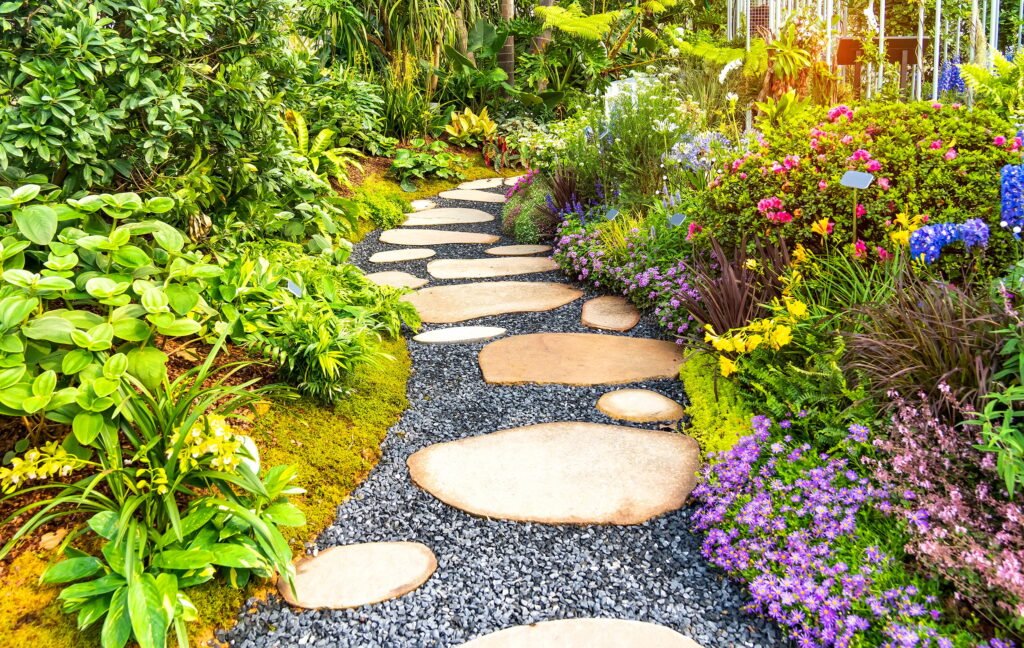
1. Pea Gravel
- Appearance: Smooth, rounded pebbles about ⅜-inch in size, available in a variety of colors.
- Pros: Soft underfoot, attractive, easy to install.
- Cons: Shifts easily, not ideal for high-traffic or sloped paths.
- Best for: Decorative garden walkways, play areas, or light-use paths.
2. Decomposed Granite (DG)
- Appearance: Fine, sandy gravel with a natural, rustic look.
- Pros: Packs down to form a firm, stable surface; excellent drainage.
- Cons: Can become muddy in heavy rain unless sealed.
- Best for: Naturalistic garden paths, large walkways, or modern landscapes.
3. Crushed Stone/Crusher Run
- Appearance: Angular rock fragments mixed with stone dust.
- Pros: Extremely stable when compacted; good for high-traffic areas.
- Cons: Less decorative than pea gravel or DG.
- Best for: Primary pathways, utility walkways, or base layers for other materials.
4. Jersey Shore Gravel
- Appearance: Multicolored mix of tan, yellow, and white stones.
- Pros: Bright, beachy look; adds warmth to landscapes.
- Cons: Rounded stones can shift, requiring edging to contain.
- Best for: Decorative pathways, patios, or casual garden areas.
5. Marble Chips
- Appearance: Shiny, white angular stones.
- Pros: Reflective surface brightens shaded areas; elegant look.
- Cons: Can be sharp underfoot, reflects heat in sunny areas.
- Best for: Formal gardens, accent pathways, or highlighting plant beds.
6. River Rock
- Appearance: Large, rounded stones in natural earth tones.
- Pros: Attractive and natural-looking.
- Cons: Too large and unstable for walkways; best used decoratively.
- Best for: Edging pathways or dry creek bed features.
How to Build a Long-Lasting Gravel Path
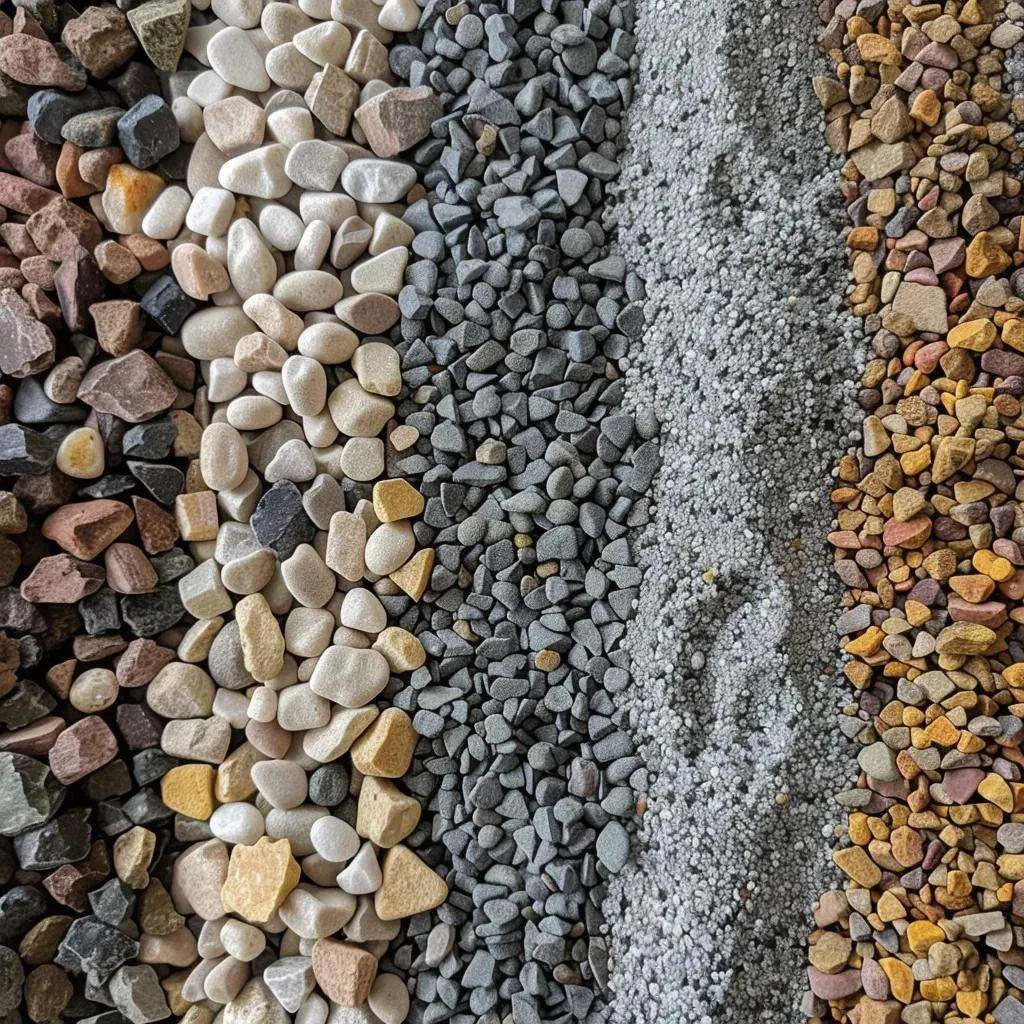
Even the best gravel won’t perform well without proper installation. Here are essential steps:
- Plan the Pathway
- Mark out the shape with garden hoses or stakes and string.
- Consider curves for a more natural feel.
- Excavate the Area
- Dig down 4–6 inches to allow space for base layers.
- Remove weeds, roots, and large rocks.
- Lay a Base Layer
- Use crushed stone or coarse gravel as the foundation, about 2–3 inches deep.
- Compact it with a tamper to create a firm base.
- Add Landscape Fabric
- Prevents weeds while still allowing drainage.
- Spread Pathway Gravel
- Add 2–3 inches of your chosen gravel.
- Rake evenly and compact if needed.
- Edge the Pathway
- Install edging (metal, stone, wood, or plastic) to keep gravel contained and maintain clean lines.
Maintenance Tips for Gravel Paths
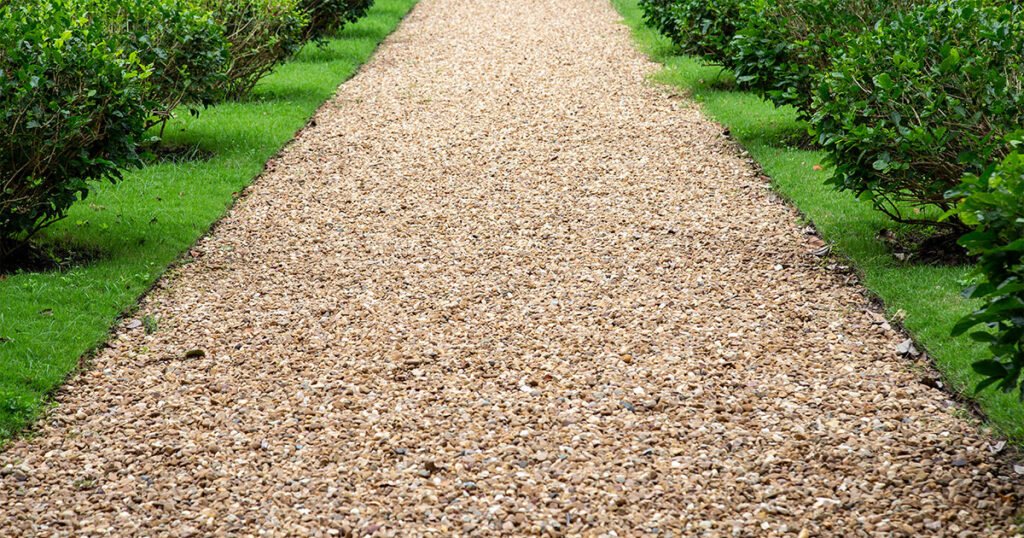
- Rake regularly: Redistribute gravel that shifts out of place.
- Top up as needed: Add fresh gravel every couple of years to replace what’s compacted or lost.
- Weed control: Apply a pre-emergent herbicide or hand-pull weeds that sneak through.
- Check drainage: After heavy rain, fill in low spots with more gravel to prevent puddling.
Matching Gravel to Garden Styles
- Rustic/cottage gardens: Pea gravel or decomposed granite blends beautifully with flowers and informal plantings.
- Modern landscapes: Crushed stone in cool gray or black creates clean, sleek pathways.
- Coastal homes: Jersey Shore gravel complements sandy, beach-inspired designs.
- Formal gardens: Marble chips or finely crushed stone lend elegance and structure.
Final Thoughts
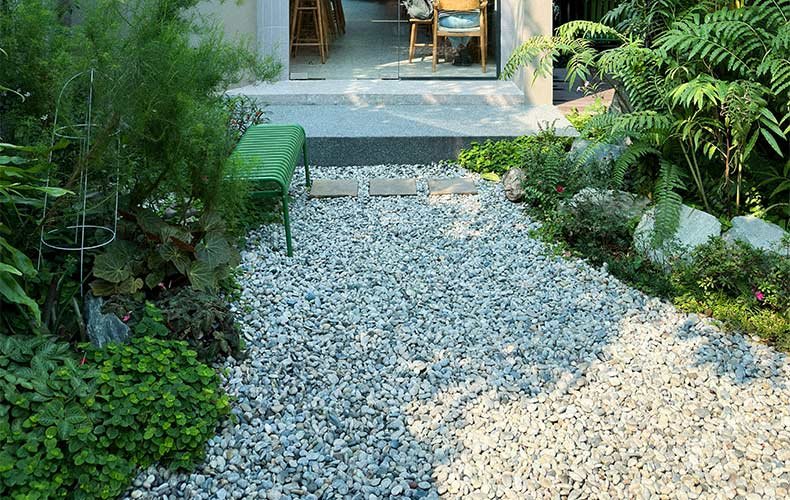
Choosing the right gravel for pathways isn’t just about looks—it’s about comfort, durability, and how well the material suits your climate and lifestyle. Angular gravels like crushed stone and decomposed granite provide stability and longevity, while rounded gravels like pea gravel add charm and softness. By considering size, texture, and function, and by installing the path properly, you can create a gravel walkway that enhances your garden’s beauty while lasting for years.
With the right gravel, your pathway won’t just get you from point A to point B—it will become a defining feature of your landscape design.



